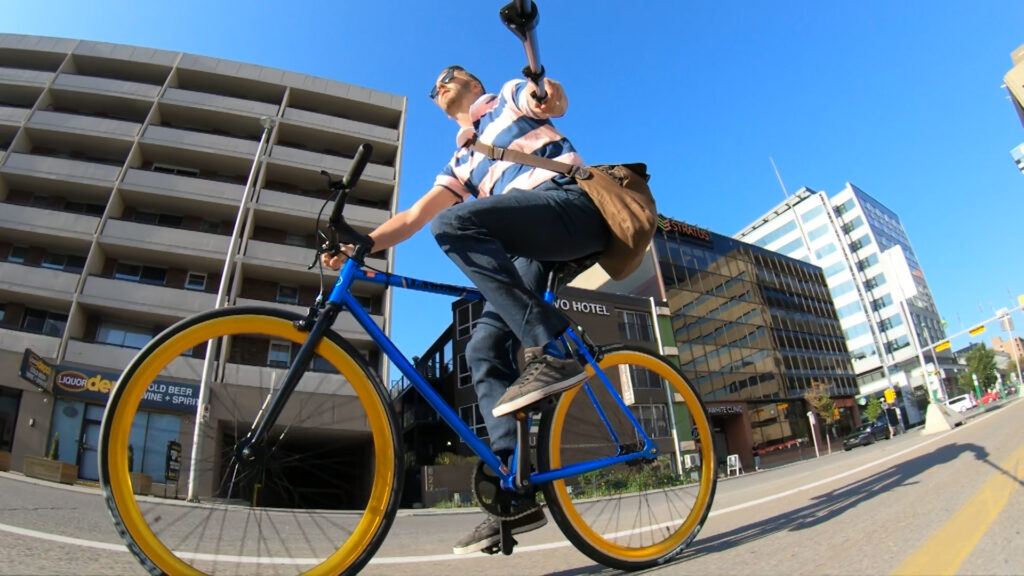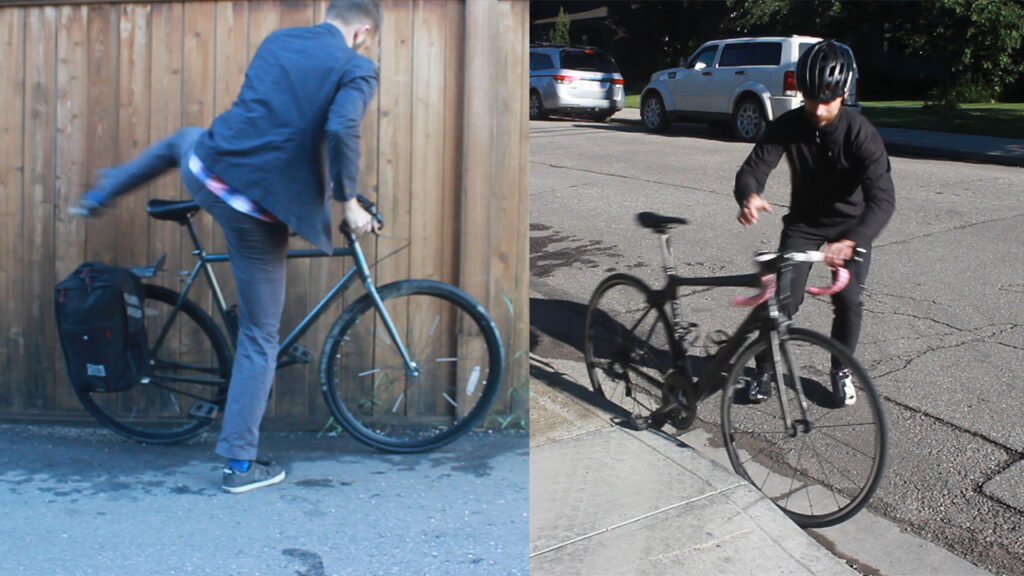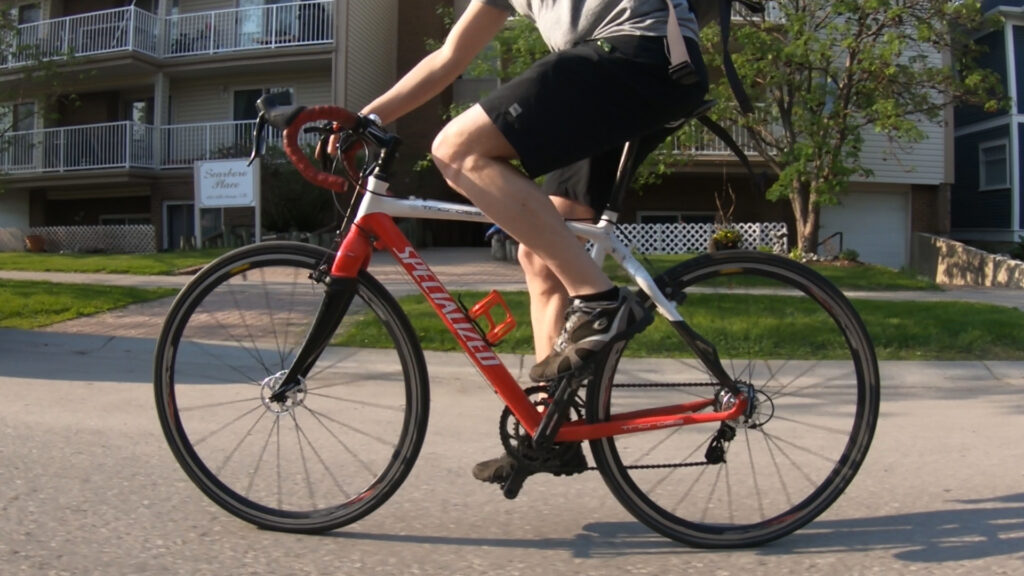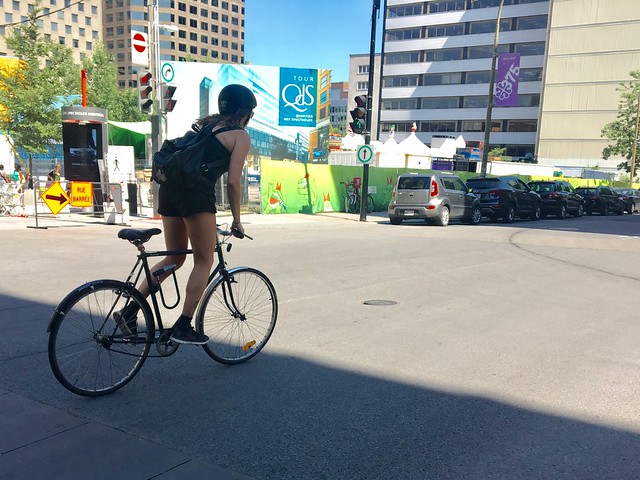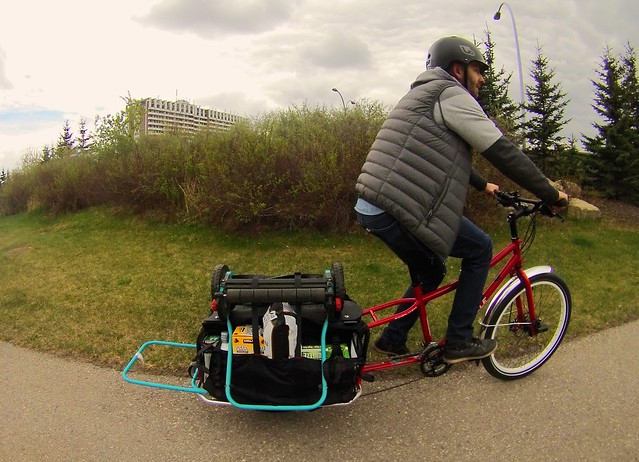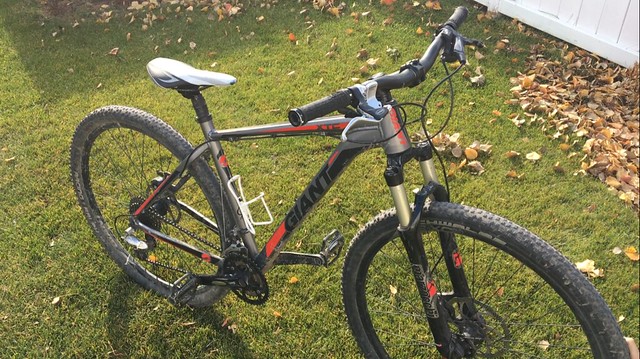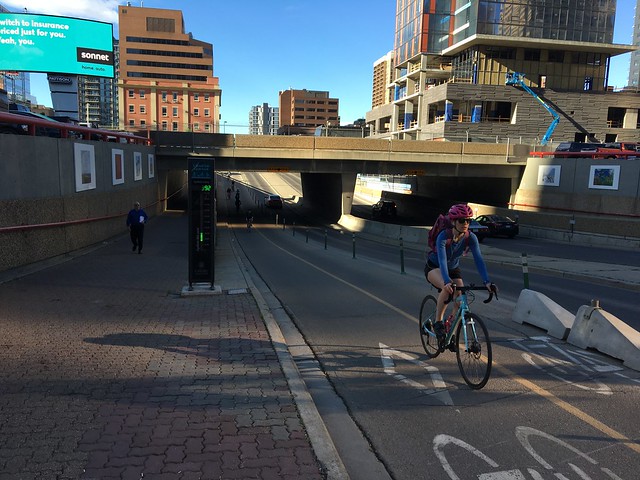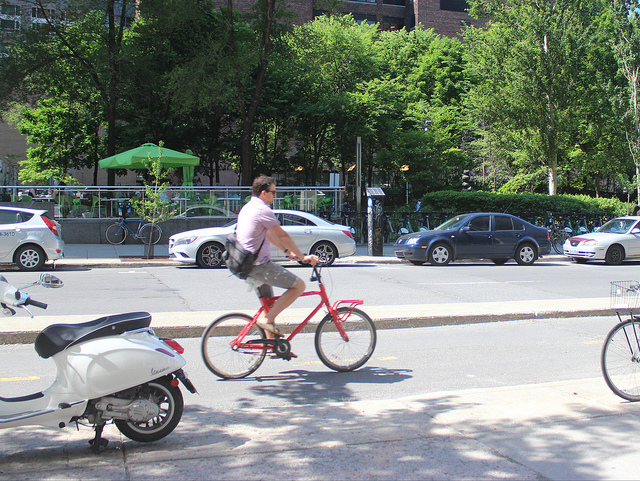
Sometimes, getting around on a bike requires some advance planning. Photos by Tom Babin.
Veteran hard-core commuter cyclists are good at many things. Telling you exactly how much mileage they’ve logged far this year, for example. Clip-clopping in their stiff-soled cycling shoes in places where that is totally inappropriate. And offering the simplest advice to anyone who has ever expressed interest in riding their bike more: “Just get out there and do it, man. You’ll figure it out.”
This is, actually, pretty great advice. Cycling needn’t be complicated, especially if you’re style of cycling tends toward the utility side, rather than the athletic side. You don’t really need any special gear or advice. Just give it a try.
OK, got it? Great. Now that we’ve got that out of the way, I’ll offer you some hard-won advice that took me years to figure out. Choosing the right route for that urban bike ride can be uber-important, especially if you live in a city with minimal safe routes for bikes.
Most of us have built up a mental map of our cities. Unfortunately, most of us have built that map while driving a car, which means our mental map doesn’t always include the things we need to know for a bike ride. Does your mental map include information about the width of the shoulder on a busy route? Does your mental map include a tally of left-turns across multiple lanes of traffic? Then it might be time to adjust that mental map in a bikeward direction.
Before you get riding, stop and think about the route, especially if you’re still coming to grips with the fact that much of your ride will be beside fast-moving boxes of steel that can kill you. Here are a few things to ponder in that moment before you kick off:
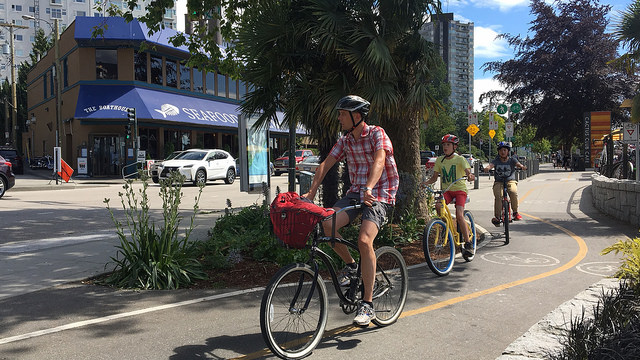
There’s a hierarchy of bike infrastructure to take into account.
Traffic volume
In general, choose the roads that have the fewest number of moving vehicles. If you must venture on to a busy road, at least bookend that time with some quiet routes that offer some decompression time.
Road width
This may be counter-intuitive, but the narrow streets are often preferable. While a wide street feels like it should give you more room to avoid being flattened by a car, wide roads also encourage drivers to go fast. Narrow streets, particularly those full of parked cars in residential areas, are a car driver’s worst nightmare – conjuring those old driving-school images of children darting into the street after a ball. As a cyclist, this is a good thing. It means drivers may actually slow down. They may even pay you respect on the road. Maybe.
Off-road
Your car-driver mental map probably has blank areas for things like parks, schoolyards and wooded areas. Your bike map, however, needn’t be so. A shortcut through a park on a bike isn’t just efficient, it’s safe and fun.
Roads with sharrows
Sharrows are those roads that have designated to be shared by automobile drivers and cyclists (the word is an amalgam of “shared right-of-way), often marked with road paint or signage of a bike with a couple of arrows coming out of the sky. Lazy city planners love sharrows because it makes them feel like they are accommodating bikes without actually doing anything to accommodate bikes. Don’t be fooled: sharrows suck. Don’t think of a sharrow route as a safe route. It’s the same as any other road and, in fact, may be more dangerous.
Bike lanes
Yes, of course you’ll choose routes that have been designated for bikes, right? These are the safe and direct routes, right? Aw, you’re so cute when you live in a fantasy world. Down here the real world, cities are full of badly planned, badly marked bike lanes that do little to improve safety. So get your city’s map of bike lanes, but use it to plan your route with a grain of salt. Create a hierarchy of bike lanes in your planning with the safest routes at the top of the priority list, like this:
- Bike lanes separated from traffic with a physical barrier, such as concrete or bollards. Parked cars also work as a good physical barrier, if cities are smart enough to build this way.
- Bike lanes with a buffer of some sort, such as a metre or two of space between the car lane.
- Painted bike lanes. Having a designated route is nice, but without a barrier between the lane and moving vehicles, painted lanes are bit like watching the latter Police Academy movies – better than nothing, but they just don’t measure up to the ones with Steve Guttenberg.
- Community bike routes: These residential roads that have been designated as bike routes go by many names, but they are all versions of the idea that calling a quiet road a bike route will somehow make it safer. This can be true. If the road is embraced by cyclists and becomes busy with bikes, car drivers tend to slow and the road will be safer. Sometimes cities even install traffic calming devices such as speed bumps or roundabouts. Great! But if this is just a regular road that’s been decorated with signs featuring bikes, don’t forget: this is just a regular road.
Busy roads
OK, you’ve exhausted all of your bike lanes, quiet roads and safe choices, but you are still forced to venture on to a road with all kinds of fast-moving cars. This is the sad reality for many of us. But there are a few things you can do to ease this pain. Minimize the number of left turns you must make. Keep your time short. And finally, as a last resort, do something I never thought I’d advise: Pick up the skills of a vehicular cyclist. This idea, that cyclists should ride in the same manner as automobiles, was the dominant idea in cycling in North America for much of the 20th century, but has now been thoroughly debunked. Why? Because it didn’t work. After 40 years of trying, we’ve realized that riding a bike like a car is really hard, and most of us are too scared to do it. Yet, vehicular cycling still has skills to teach us: Be visible, keep up your speed, ride with confidence, signal your intentions, be predictable. These skills take time to develop, but if you find yourself on busy roads, you will thank those grumpy old vehicular cyclists for showing us how it can work.
Just do it
If all of this seems like too much thinking for a simple bike ride, then take the advice of those wily veteran cyclists: “Just get out there and do it, man. You’ll figure it out.”
You can also follow Shifter on Facebook or Medium or our YouTube channel.
Follow Tom Babin on Twitter, Facebook or Medium.
Tom Babin is the author of Frostbike: The Joy, Pain and Numbness of Winter Cycling.
